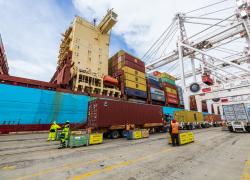
Labor unions help marginalized populations – and our communities more broadly – in ways you might not realize.
Labor unions are associated with building and preserving the middle class. And rightly so: through collective bargaining, unions routinely secure better wages and benefits for the workers they represent. Their efforts at the bargaining table generally allow workers employed under a union contract to enjoy a comfortable standard of living. Workers covered by a negotiated collective bargaining agreement typically have higher annual earnings, better health insurance coverage, and greater access to employer-sponsored retirement plans than those who are not. But in addition to their traditional roles as representatives for workers across many industries, unions help unemployed and non-union workers, many from underrepresented and historically marginalized groups, through advocacy and activities that transcend any bargaining table.
With this post, the Office of Labor-Management Standards is introducing a series of blog posts that will explore many of the ways in which work by unions advances the interests of all workers. In the coming months we will spotlight the labor movement’s work to:
-
Sponsor pre-apprenticeship programs designed to help unemployed and underemployed workers acquire the skills they need to move into more formal apprenticeship programs and from there into stable employment in high-paying jobs.
-
Raise awareness about wage theft, which costs workers – primarily low wage Black, Latino and Latina, and migrant workers – hundreds of millions of dollars annually.
-
Lead climate jobs initiatives as part of a concerted effort to combat the devastating consequences of climate change, which disproportionately harms low-income individuals and underserved communities.
-
Improve social safety net programs such as minimum wage levels, health care and retirement protections, and paid leave, which benefit all workers but are particularly important to low wage-earning families.
These are just a few examples of how unions work beyond the bargaining table, often benefiting people from historically marginalized populations and strengthening local communities along the way. In the weeks ahead, we will dive deeper into these and other topics that illustrate this important point: unions are not just about collective bargaining, and their work doesn’t benefit only the members they represent. You will be able to find these blogs on our website under the Worker Empowerment and Advancing Labor-Management Partnerships page, or subscribe to the OLMS list serve to receive blog posts to your inbox.
In the meantime, I invite you to stop by the Unions in Our Communities and Democracy section of the Department’s Worker Organizing Resource and Knowledge Center (or WORK Center, for short) to explore even more content on how unions work far beyond the bargaining table to positively impact lives and our communities.
Jeffrey Freund is the director of the Department of Labor’s Office of Labor-Management Standards.

 U.S. Department of Labor Blog
U.S. Department of Labor Blog






